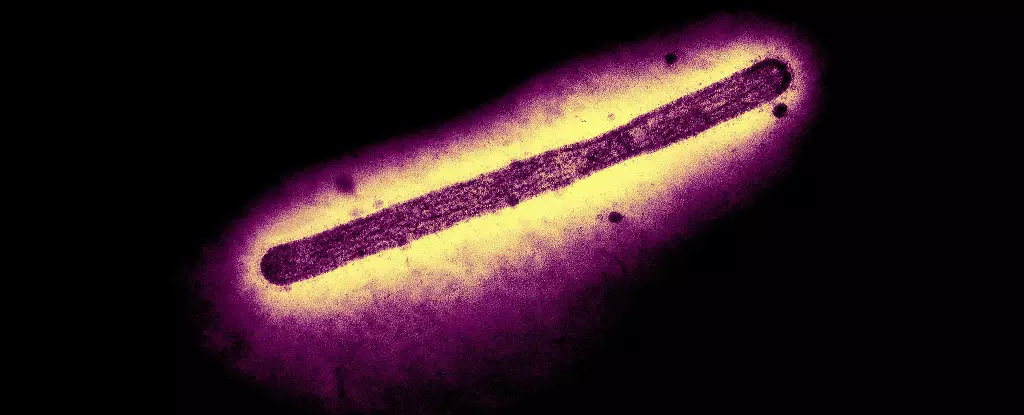The emergence of bird flu, particularly the H5N1 strain, has reignited fears among experts and public health officials alike. This anxiety is not rooted solely in its impact on bird populations or its occasional transmission to humans but is amplified by troubling reports of infections in cat species. Recent findings reveal that the H5N1 virus is undergoing significant genetic mutations that could, theoretically, enhance its capacity for human infection. While this creates a landscape of uncertainty, scientists urge caution and a measured response, drawing attention to the complexities of influenza virus behavior.
The Current Situation: Human Cases of Bird Flu
As of 2024, the Centers for Disease Control and Prevention (CDC) has documented 65 confirmed human cases of bird flu within the United States. One of the most severe cases reported involved an elderly patient in Louisiana, who was hospitalized in critical condition due to the H5N1 infection. Genetic analysis revealed specific mutations in the viral strain, which could theoretically allow it to bind more effectively to human respiratory cells. The Oregon patient’s case raises essential questions about the mutation’s implications and the broader context of viral evolution. While experts note these mutations reflect adaptation to human hosts, they caution against jumping to conclusions regarding pandemic risk.
The CDC’s thorough investigations encourage a friendlier stance towards scientific skepticism, reminding us that such mutations have not translated into wider transmission among humans. Experts like Dr. Angela Rasmussen emphasize that while the observations are significant, they do not automatically imply that the virus poses an imminent threat to public health on a pandemic scale. The notion that a virus could become more transmissible hinges on numerous molecular factors, not solely its ability to attach to human cells.
The clinical picture painted by the Louisiana case should prompt reflection rather than dread. Thijs Kuiken of Erasmus University Medical Center notes that while efficient binding to cells in the human upper respiratory tract is critical, it is merely one piece of a much larger puzzle. The capacity for a virus to mutate and adapt to humans does not necessarily correlate with an increased risk of widespread transmissibility. Some mutations may inadvertently lead to milder disease presentations, favoring upper respiratory tract infections rather than severe lower respiratory tract conditions like pneumonia.
This nuanced understanding underscores the importance of continued surveillance and research. Scientists advocate for vigilance but underscore that not all mutations lead to catastrophic outcomes. Historical data support this view—previously observed mutations in critically ill patients have failed to cause significant outbreaks or widespread public health emergencies.
Adding another layer to this evolving narrative is the alarming trend of bird flu infections in domestic cats. In one disturbing incident, a cat in Oregon perished after ingesting raw pet food tainted with H5N1, which led to recalls from pet food suppliers. Experts express concern that even strictly indoor cats could become vectors for the disease, potentially exposing their human companions through close contact. This fear is compounded by the deaths of big cats at a sanctuary in Washington State, all attributed to H5N1 infections.
The implications of such cross-species transmission highlight the intricate relationships between humans, pets, and wildlife concerning viral pathogens. As these instances of cat infections become more common, researchers face increasing pressure to establish a clearer understanding of how the virus might evolve and spread in different host species.
As bird flu continues to spread, the need for comprehensive monitoring and a multi-faceted response becomes critical. The potential for genetic recombination with seasonal human strains heightens the urgency for surveillance among populations at risk, particularly among those who work closely with poultry and domestic animals.
While the influenza landscape is complex and fraught with unpredictability, the response must be grounded in evidence and clarity. Understanding the evolutionary trajectory of H5N1 allows for better prepares against possible future outbreaks, reducing panic while emphasizing prudent preventive measures.
In closing, as we digest the implications of the recent findings regarding bird flu, it is vital to maintain a balanced perspective. The intersection of viral evolution, public health, and animal welfare demands that we stay informed and vigilant, fostering collaboration among scientists, veterinarians, and health officials. Through proactive research and open communication, we can navigate the perils presented by this ancient foe while ensuring public safety remains paramount.


Leave a Reply